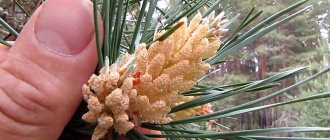Cinquefoil or Kuril tea is a universal shrub that will reward its owner not only with the joy of contemplating beauty, but also with the benefits that its leaves and stems bring. For almost five months every year, cinquefoil shrubs are covered with small, elegant flowers of white, yellow, orange, pink or red, depending on the variety.
Cinquefoil bush was brought from the Kuril Islands, for which it received the name Kuril tea. It is an excellent diuretic. Decoctions and teas from cinquefoil help with dysbacteriosis and normalize digestive processes in the body. Leaves and twigs of the bush can be brewed both dried and fresh.
Description of cinquefoil: varieties and varieties
If in ancient times healers wanted to stop bleeding from a wound, relieve pain or cure poisoning, cinquefoil shrubs came to the rescue. Caring for and growing the crop does not cause any trouble for gardeners. Nowadays the perennial is more cultivated as an ornamental plant. There are at least 500 species of shrubby cinquefoil (quinquefoil). Here are just a few varieties:
- Annette - up to 0.5 m, flowers are orange with a reddish tint.
Variety Annette - Longacre - with yellow flowers.
Variety Longacre - Pink Queen - with creeping shoots and pink flowers, up to 60 cm in height.
Variety Pink Queen - Princess is a perennial variety with pale pink flowers.
Princess variety
Anyone who has been growing and propagating cinquefoil for many years knows that it makes an excellent drink, rich in vitamin C. For this reason, the plant is called Kuril tea. In Siberia and the Kuril Islands, it is most common as a remedy for colds and flu. Those who have already used cinquefoil in landscape design on their site probably liked the ease of its cultivation and ease of care.
Belissima
A relatively young dwarf variety is a branched, dense, cushion-shaped shrub that grows 30-60 cm in height and width. It is not for nothing that the name of this variety is translated as “most beautiful” - during flowering the bushes are strewn with large semi-double flowers, painted in an intense pink tint, which do not fade even in bright sun. This variety of cinquefoil blooms from June to September.
Small lanceolate leaves of a juicy green color have silver stripes along the edges and are covered with a small fluff. The plant produces many side shoots, making it an excellent option for border planting. Due to its low growth, this cinquefoil can be planted in company with tall ornamental deciduous shrubs, whose lower branches become exposed as they grow.
Belissima cinquefoil tolerates dry soil well, but does not like too dry air. It prefers to grow in the sun, although it remains decorative in partial shade.
Planting a plant
The optimal location is partial shade. When planting in a sunny area, you risk not admiring the bright flowering of the five-leaf plant. Some varieties fade under hot rays. In absolute shade the plant will not develop well.
Advice. Cinquefoil tolerates planting well not only in open ground, but also in large flowerpots on balconies or loggias.
The soil should be rich in humus, well drained, loam is preferred. The pink varieties are the most demanding in this regard. Plant bloodroot in spring or fall. The depth of the holes is about 50 cm, the distance between them is about 60-80 cm. Lay the drainage in a layer of up to 20 cm. It is best to use limestone gravel: it contains calcium.
Choose a cozy place in partial shade for the cinquefoil
Pour soil with sand and humus on top. Place the seedling in the hole, making sure that the root collar does not go deep into the ground. Fill it with soil in combination with complex mineral fertilizer. The final stages of planting are abundant watering and mulching with sawdust.
Advice. In addition to compost and sand, 100 g of lime or ash can be added to the pits for nutrition and care.
Double Punch Cream
localgardener.org
The pink buds of plants of this variety open into double creamy-white flowers. Potentilla Double Punch Cream blooms profusely from the beginning to the end of the summer season.
The bushes are compact, reaching 40-50 cm in height and 60-100 cm in width. They prefer to grow in well-lit sunny areas, are resistant to drought and can tolerate frosts down to –25°C.
This variety of cinquefoil is perfect for garden compositions as a lining to tall shrubs, and when grown in containers it can be used for landscaping balconies, terraces and loggias.
Cinquefoil care
For good growth in open ground and flowering, cinquefoil requires moist soil. Therefore, the main rule of care is watering. Often, cinquefoil only needs rainwater, and it is also considered a drought-resistant plant. However, still make sure that the soil does not dry out.
In the first 3 weeks after planting, young seedlings should be given half a bucket of water once every 7-8 days. During hot summers, provide watering 2-3 times a week. A bucket of water will be enough for each bush, but not ice water. Finish the procedure by loosening (to a depth of 5-10 cm) and mulching.
It is very important to maintain soil moisture
The appearance of the cinquefoil requires regular maintenance. Remove weeds and trim bushes. Pruning is best done in spring or fall. Once every 3 years, trim the branches by about 1/3 or a little more if the landscape design requires it.
Description
Cinquefoil is an erect or prostrate deciduous shrub 10-150 cm high. It is also known under other names: five-leaf, Kuril tea. The plant belongs to the Rosaceae family. Young branches are thin, silky-hairy. Over time, the bark acquires a brownish-gray or red-brown tint and begins to peel off. The leaves are petiolate, pinnately compound, with finely toothed edges. The color can be rich green or muted (a grayish tone is added to the green).
A special feature of Kuril tea is the simultaneous blooming of male and female flowers on the shoots of the current year. Each contains 5 petals and about 30 stamens - the middle looks fluffy, which increases decorativeness. Flowers last from 6 to 48 hours, depending on air humidity and temperature. In the wild form of Kuril tea, the color of the petals is only yellow; in the cultivated form, different colors are possible (petals can be pink, white, cream, orange, copper-yellow, red). Small seeded fruits do not spoil the appearance of the bush.
Related article:
Privet bush
Fertilizer and feeding
In addition to the mineral fertilizer applied during planting, cinquefoil needs the following feeding:
Potassium sulfate and phosphate fertilizer:
- 25-30 g of both per bucket of water;
- 1 bucket is enough for 1 bush;
- application time is spring.
For abundant flowering, the crop needs regular fertilizing.
Phosphorus and potassium fertilizing:
- use any according to the instructions;
- Application time: before flowering.
Botanical characteristics
Cinquefoil is a medicinal plant that resembles grass shoots. It reaches up to 1.5 m in height. Shoots can be erect, ascending or creeping. The rhizome of the plant itself is located superficially on the ground. Potentilla leaves are green in color. The shape of the leaves is dissected.
The small flowers of the plant are located at the tips of the shoots in loose paniculate, corymbose or false umbellate inflorescences. In addition, they are able to grow separately on tall, straight peduncles. Potentilla begins to bloom in May.
The flowers of the plant are bisexual, their colors are very diverse. Among the colors you can find yellow, orange and even white. Potentilla petals are the same tone, or differ from others in two-color tones.
The plant is pollinated by the wind or some insects. After 3 weeks after pollination, fruits resembling olive-colored nuts can be seen on the cinquefoil. They are grouped in groups of 10-80 inside a thin hairy achene.
Potentilla propagation
When growing cinquefoil, 4 propagation methods are used:
- layering;
- cuttings;
- dividing the bush;
- seeds.
When propagating by layering, the cut shoot is bent to the ground. The cut site is secured with a pin and sprinkled with soil. When the cutting has acquired its roots, it is planted in a new place. This is the easiest method.
Rooted cuttings of cinquefoil
Cuttings are cut in the summer from those branches that appeared last year, removing the lower leaves. Plant them in moist soil in the shade of the garden, covered with a jar or bottle. Water during the day. The buds are removed so that they do not weaken the plant.
If the cinquefoil is already 4 years old, it can be divided and planted. The selected shoot with growth buds is separated from the main bush and rooted in open ground. They do this both in spring and autumn. The main condition is warm weather.
Seeds for subsequent propagation are collected either at the end of summer or in September-October. They can be dried and stored for several years or planted immediately. Distribute them over the surface of the soil and press down lightly. Self-seeding, which is typical for cinquefoil, is also used. Young shoots from seeds are planted in temporary ridges, and after a couple of years - in a permanent place.
Selection of seedlings
A bush cinquefoil seedling can be purchased at a nursery. High-quality planting material has:
- several flexible shoots with living but unopened buds;
- compact crown;
- roots at least 15-20 cm long (they should not be dry, very short, or broken);
- with a closed root system, the lump of earth should have a diameter of at least 30 cm.
Diseases and pests
And here is a reason to rejoice for gardeners who grow cinquefoil. Planting and caring for it are also simple because pest control is not required. They practically do not touch this perennial plant. Almost the only misfortune is rust.
Cinquefoil is quite resistant to both diseases and pest attacks.
Yellow-brown spots with a purple tint appear on the leaves. If the bush is severely affected, the foliage curls and dries out, you will need to spray it with a solution of manganese and boron or sulfur. Rust develops well on pine branches; avoid proximity to this conifer.
Medicinal properties and uses of Kuril tea
The plant contains a lot of calcium, potassium, iron, honey, as well as other beneficial substances that have a beneficial effect on the body. To prepare tea, you should use dry leaves and inflorescences of Kuril tea. A saturated decoction of the plant can be used to wash burns and treat fresh wounds. The drink of Cinquefoil Bush helps in the fight against colds, having an antipyretic effect. The medicinal properties of the culture also include:
- assistance in the treatment of bronchitis and pneumonia;
- elimination of inflammatory processes in the mucous membrane of the eye;
- disinfection of the throat, rinsing the nasopharynx;
- decrease in body temperature;
- providing a diuretic effect;
- normalization of metabolism, elimination of chronic constipation.
Kuril tea should not be used if you have individual intolerance, pathologies of the kidneys, liver, or during pregnancy.
Cinquefoil shrub: combination with other plants
Good partners for the five-leaf plant:
- Heuchera;
- junipers;
- barberry;
- cotoneaster;
- hosta
Cinquefoil in a flower bed
The combination of yellow cinquefoil with:
- catnip;
- lavender;
- hyssop.
Plants with white, blue and blue flowers are a good addition to the five-leaf plant.
Cinquefoil after flowering: autumn, winter
With the onset of autumn, they stop watering the perennial so that the wood is fully matured. If necessary, prune. Good winter hardiness allows the bushes to overwinter without shelter, but young growth needs it. Clear the root space of fallen leaves and build a fifteen-centimeter layer of peat.
When purchasing a seedling, be sure to take into account zoning, because most hybrids are created on the basis of heat-loving species. Remember a simple rule - good winter hardiness in varieties with white and yellow flowers, lower in red, orange, pink cultivars. They will need shelter for the winter.
Cinquefoil shrub in landscape design
This plant holds its shape well. Borders and hedges look beautiful. A single cinquefoil bush on the lawn looks harmonious. Often in landscape design this perennial is used for:
Cinquefoil in landscape design
- flower beds-mixborders;
- rosaries;
- rock gardens.
Cinquefoil shrub can grow in open ground for up to 20-30 years. Make room for it and it will decorate your garden all year round.
Double Punch Peach
agronomov.ru
The height of an adult bush of this variety is 40-50 cm, and the diameter is 60-90 cm. The dense cushion-shaped crown is densely strewn with bright green, slightly pubescent leaves. Large semi-double flowers up to 5 cm in diameter are colored salmon-pink with a yellow scattering of stamens in the core. The shrub blooms from mid-June to the end of September.
Cinquefoil of the Double Punch Peach variety can grow in the sun and in partial shade, while in shaded places the color of the flowers becomes more saturated.
The plant is undemanding to soil and has high winter hardiness. Excellent for single and group plantings, rockeries and mixed borders, it will look great as a low hedge.











